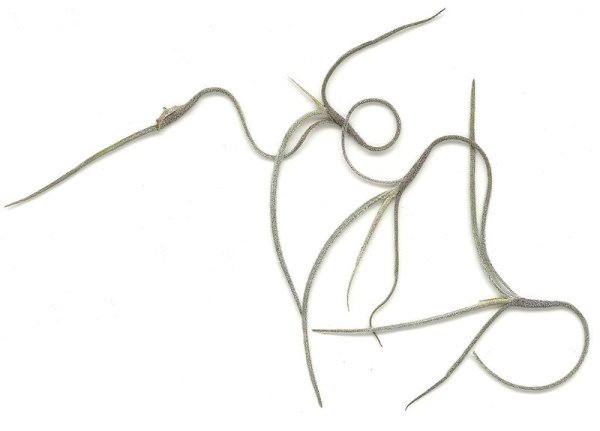
I discussed epiphytes a couple of days ago because I wanted to use this beautiful photo as a quiz.
Though this looks like an artistic squiggle it’s actually a close-up of a plant.
Here are some hints to its identity:
- It’s an epiphyte.
- It’s native to the southeastern U.S. where the climate is warm with high humidity.
- It has tiny inconspicuous flowers. (As many times as I’ve seen this plant I’ve never noticed any flowers.)
- Its leaves are alternate, thin, heavily scaled and curved. These are its leaves.
- The leaves appear to form long chains.
- Big hint: It’s commonly found hanging from southern live oaks and bald cypress trees.
Can you guess what it is?
Leave a comment with your answer.
(photo by Ernest V. More in the public domain on Wikimedia Commons)
Spanish moss?
It was used to stuff upholstered furniture.
spanish moss?
From all the clues, my guess is Spanish moss…there’s a lot of it in Tallahassee!
It’s not a moss.
Nor is it Spanish.
I’m just throwing a shot in the dark without any research: Spanish Moss?
Spanish moss
Cool! Everyone was right. Maybe my hints were too easy.
Its common name is Spanish Moss, although it is not a moss. It is actually in the Bromeliad family…doesn’t look much like a pineapple (another bromeliad) does it?
There is a plant that grows on the trees in Alaska called Old Man’s Beard that reminds me of Spanish Moss, but it’s actually a lichen.
The last clue was the clincher….hanging from southern oak trees.
Spanish moss was used all kinds of ways. Dried, it was stuffed into mattresses and pillows, made into play-dolls, used as packing material, and mixed with mud to make walls of old cabins. But it had to be dried first! Still today you can see fences and clotheslines draped with spanish moss drying. When dry, it’s black and stringy. Nice photo!